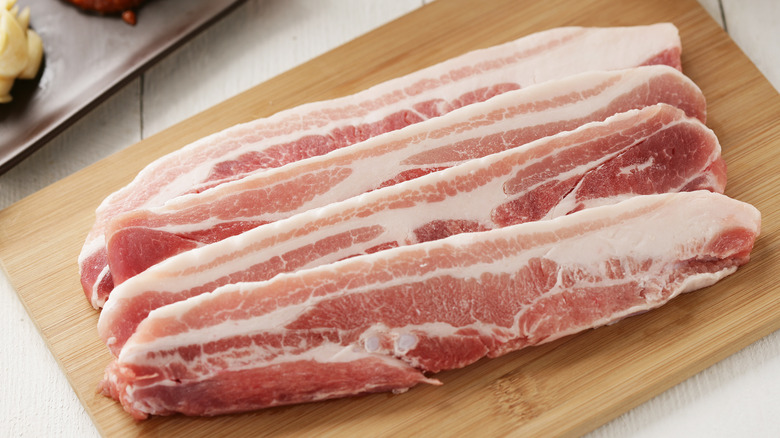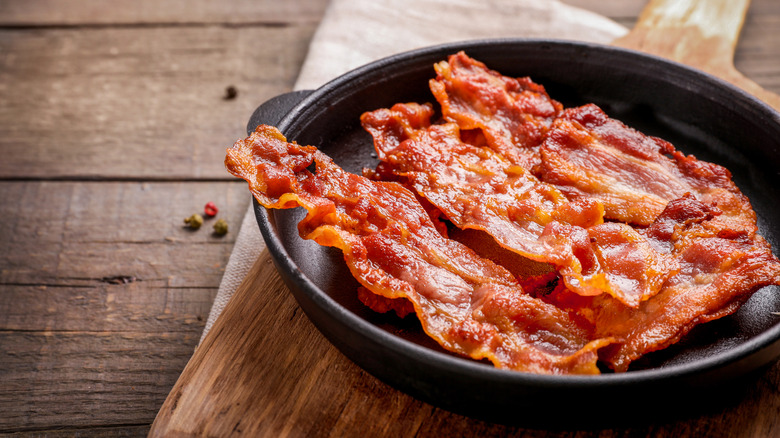What's The Difference Between Bacon And Salt Pork?
We may receive a commission on purchases made from links.
Long before it became a food movement like farm-to-table and eating local, Southerns were eating "nose to tail." The longstanding Southern tradition known as boucheries celebrates and gives thanks for a hog's life by slaughtering, cooking, and smoking the entire animal on-site — set to Cajun music, of course (via Sustainable Dish).
While boucheries began in days before refrigeration, bringing neighbors together to slaughter, break down, and preserve each other's meat before it went rancid — using every part of the pig, from "trotters to ham hocks" — is a responsible way to reduce food waste today. Chef Loreal Gavin, known as "The Butcher Babe" on Season 10 of "The Next Food Network Star," says the movement is being seen in fine dining kitchens where frugal, underused cuts of meat like pig cheeks are used because "seasoned diners want to put their ethics where their mouth is" (via Huffington Post).
According to the Carnivore Club, the cuts from the top of the pig tend to be more tender and lean, but like beef, slow cooking the tougher, fattier cuts over time tenderize tough meat. Along with dried salamis and sausages, the pig is butchered into many different cuts of meat, from picnic hams to spare ribs and pork chops. While our beloved breakfast favorite bacon is commonly found in supermarkets, you may wonder what the lesser-known salt pork is on the recipe for baked beans or chowder you're dying to try.
Bacon is smoked
About 30% of the pig is cooked and consumed fresh, like pork chops, leaving the remaining 70% to be smoked or cured, per MasterClass. Four large primal cuts including pork belly, shoulder, leg, and loin, are broken down into 18 subprimal cuts. In addition, the head, knuckles, and carcass are sold, too.
From the pig's underside, bacon and salt pork are cut from the pork belly, the fattiest part of the pig. According to Food Network, while both cuts are salt-cured to preserve the meat longer, bacon is smoked, giving it a distinctive flavor. Salt pork and bacon are sold as slabs or sliced; however, bacon is more commonly found in supermarkets.
While salt pork is often used by cooking in its rendered fat, bacon is enjoyed as a side dish. With a heavy dose of umami, the fifth taste, our brains can get "addicted" to bacon. According to CNN, bacon's complex, savory taste delivers salty, sweet, and smokey flavor with a mouthwatering aroma that triggers nostalgia. With fond memories of eating bacon for breakfast as a child, the smell of bacon can make us crave the salty meat and bring us back to those memorable times.
Although leaner, Italian pancetta is a good substitute for salt pork since it's cured and not smoked. Lard can be added to make up for the little rendered fat, or you can use bacon as long as the smokey "bacony" flavor compliments the dish.

